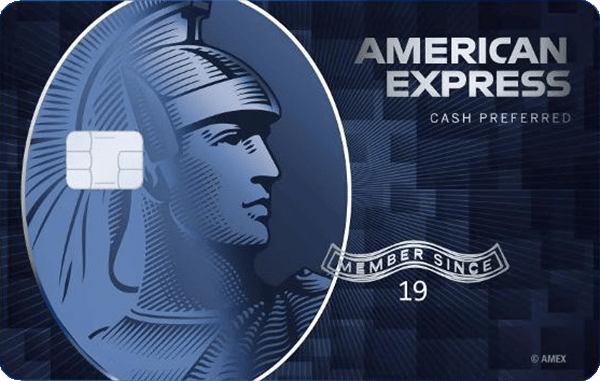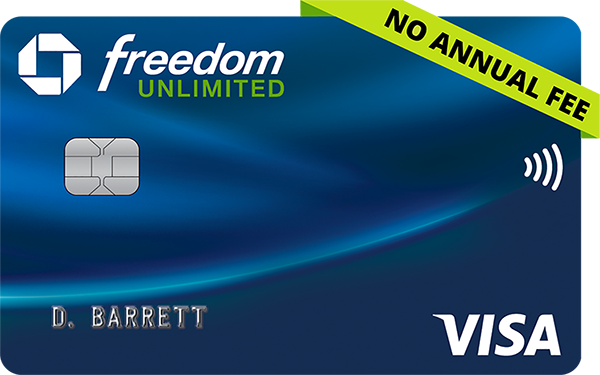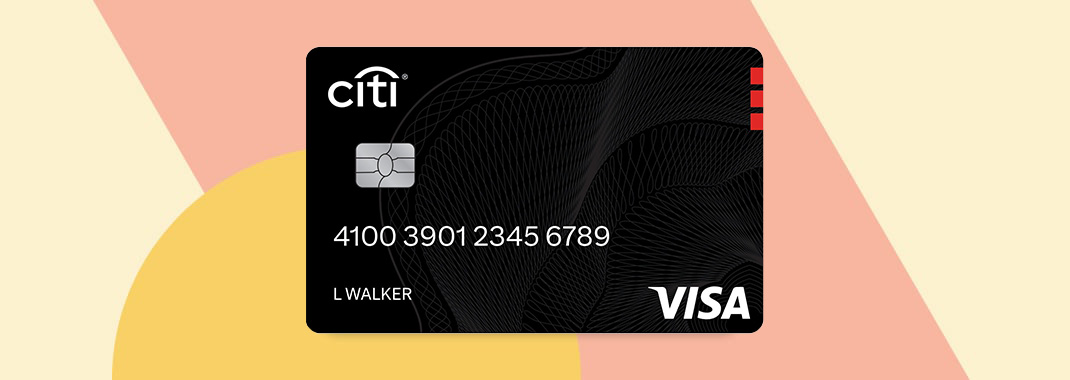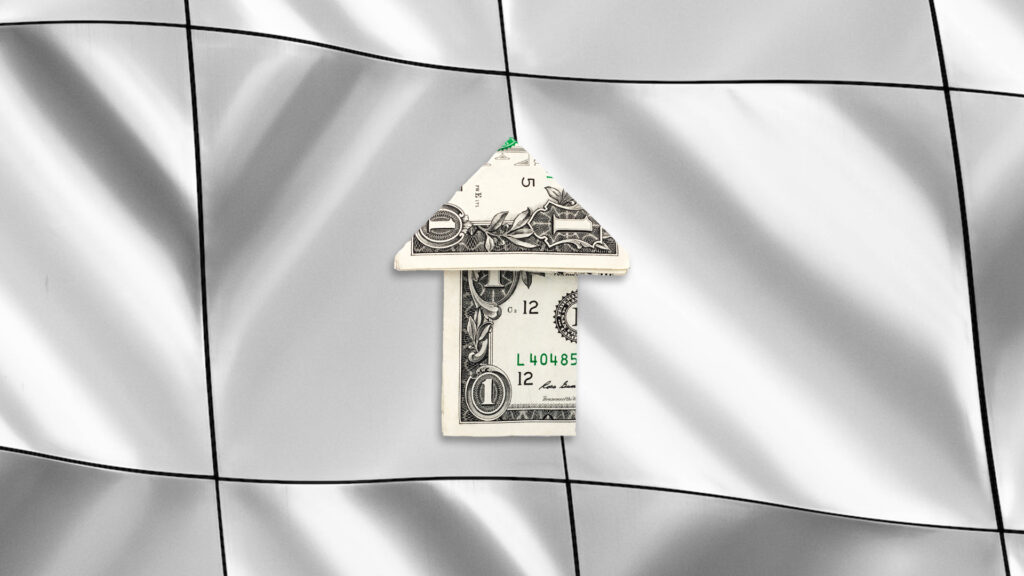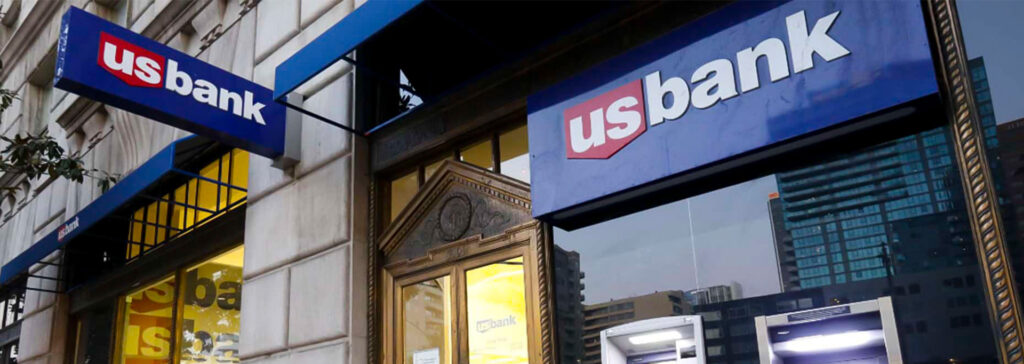Most products on this page are from partners who may compensate us. This may influence which products we write about and where and how they appear on the page. However, opinions expressed here are the author's alone, not those of any bank, credit card issuer, airline or hotel chain. This page may include information about American Express products currently unavailable on Slickdeals. American Express is not a partner of Slickdeals.
Chase Ultimate Rewards® and the American Express Membership Rewards programs both provide flexible rewards, primarily for travel. But depending on your travel habits and how you want to use your credit card rewards, one may be better than the other.
Here's a guide to help you understand both the benefits and drawbacks of each program and how to determine which is the better fit for you.
Comparing the Two Rewards Programs

On the surface, Amex points and Chase points have a lot in common. You can redeem your hard-earned rewards in a variety of ways, including travel, cash back, shopping and more. You can also transfer your Amex Membership Rewards or Chase Ultimate Rewards points to a number of airline and hotel loyalty programs for more high-value redemptions.
But when you dig deeper into the details, you'll notice that there are some significant differences in redemption values, transfer partner options, credit card earning rates and more. Here's what you should know if you're trying to decide which program to go all-in with.
Earning Rewards
Both the Amex Membership Rewards program and the Chase Ultimate Rewards program offer a handful of credit cards that you can use to earn rewards. While most of these cards offer bonus categories, some provide a flat rewards rate on all of your purchases.
American Express Membership Rewards Credit Cards
Cards that offer opportunities to earn Amex Membership Rewards include:
- Blue Cash Everyday® Card from American Express
- Blue Cash Preferred® Card from American Express
- Amex EveryDay® Credit Card
- Amex EveryDay® Preferred Credit Card
- American Express® Green Card
- American Express® Gold Card
- The Platinum Card® from American Express
Some of these cards come with enticing welcome offers along with bonus points for certain spending categories. Examples of such cards include the following:
The Blue Cash Preferred® Card from American Express
- Our Rating 4.5/5 How our ratings work
- APR18.99% - 29.99% (Variable)
- Annual Fee$95
$0 Intro annual fee for the first year, then $95
-
Welcome Bonus
$250Cash Bonus
Earn a welcome bonus of $250 (statement credit) once they spend $3,000 with the card during their first six months of card membership
This card earns generous cash back at U.S. supermarkets and gas stations and on select streaming services, potentially making it an excellent fit for households with big grocery and transportation costs.
Overview
It’s rare for a cash-back credit card to charge an annual fee, but it’s even more unexpected to earn a whopping 6% cash back at U.S. supermarkets and with select streaming services. This credit card may also be ideal for families who spend a lot of time commuting around the city and who also have multiple U.S. streaming subscriptions. The Blue Cash Preferred® Card from American Express is designed to help busy households maximize their cash-back earnings.
Pros
- An extensive array of category bonuses including up to 6% back at U.S. supermarkets
- $0 annual fee the first year, then $95
- An array of purchase and travel protections
Cons
- Rewards are earned as pure cash back with no ability to transfer to Amex's travel partners
- There's an annual fee after the first year
The Blue Cash Preferred® Card from American Express is designed to help on-the-go households maximize cash-back earnings. While this card carries an annual fee after the first year, which is rare for a cash-back product, large families that spend heavily on gas and groceries will most likely spend enough to offset the $95 annual fee.
The card earns 6% back at U.S. supermarkets, up to $6,000 each calendar year (then 1%) and 6% back on select U.S. streaming services. You'll also earn 3% back on fuel purchases at U.S. gas stations and 3% on transit expenses, including parking, tolls, bus fare and more. All other eligible spending earns 1% cash back.
New cardholders have the opportunity to earn a welcome bonus of $250 once they spend $3,000 with the card during their first six months of card membership. Learn more with our full review of the The Blue Cash Preferred® Card from American Express.
Blue Cash Everyday® Card from American Express
- Our Rating 4/5 How our ratings work
- APR18.99% - 29.99% (Variable)
- Annual Fee$0
-
Welcome Bonus
$200Cash Bonus
Earn $200 Back After you spend $2,000 in purchases on your new Card within the first 6 months of Card Membership. You will receive the $200 back in the form of a statement credit. bonus_miles_full
The Blue Cash Everyday® Card from American Express offers good value among cash back rewards card competitors. Between its competitive grocery rewards rate and welcome offer, it’s easy to extract a lot of value from this card.
Overview
The Blue Cash Everyday® Card from American Express offers good value among cash back rewards card competitors with no annual fee. With a competitive grocery rewards rate and welcome offer, it’s easy to get a lot of value from this card. If you want to earn cash back on everyday purchases but can’t justify a more premium card with an annual fee, this card might be a good choice.
Pros
- Earn cash back on valuable everyday spending categories
- No annual fee to worry about
Cons
- Not ideal for high spenders as 3% cash back is capped at $6,000 per year
- Bonus categories are not for everyone
For a card with no annual fee, the Blue Cash Everyday® Card from American Express offers an impressive amount of value. Right off the bat, new cardmembers can earn a $200 Welcome Bonus as a statement credit. To earn this welcome offer, you have to spend at least $2,000 on purchases using the card over the first six months (Terms Apply). This will get you a $200 statement credit.
This card earns 3% cash back per dollar spent at U.S. supermarkets, up to $6,000 each calendar year (then 1%) and 2% back on gas from U.S. gas stations. All other eligible purchases earn 1% back.
If you’re looking for a simple card to get cash back and earn a bonus on the popular groceries and gas categories, this card could fit your spending needs. Check out our full review of the Blue Cash Everyday® Card from American Express.
Chase Ultimate Rewards Credit Cards
Chase credit cards that earn Ultimate Rewards points include:
- Chase Sapphire Preferred® Card
- Chase Sapphire Reserve® Card
- Chase Freedom Unlimited® Card
- Chase Freedom Flex℠ Card
Note that while some of these cards are marketed as cash-back credit cards, you're technically earning Ultimate Rewards points.
Like Amex Membership Rewards, some Chase cards also provide a boost in point earnings on certain spending categories. Whether you're looking for a consumer credit card or a business credit card, consider your spending habits to find the card that best fits your needs.
Here are a few Chase cards that offer bonus points to help with earning additional rewards for your everyday spending.
Chase Sapphire Preferred® Card
- Our Rating 5/5 How our ratings work
- APR19.99% - 28.24% (Variable)
- Annual Fee$95
-
Sign Up Bonus
75,000Chase Ultimate Rewards Points
Earn 75,000 bonus points after you spend $5,000 on purchases in the first 3 months from account opening. Dollar Equivalent: $1,650 (75,000 Chase Ultimate Rewards Points * 0.022 base)
The Chase Sapphire Preferred Card is one of the gold standards for earning travel rewards. It has a generous sign-up bonus and you can earn points on travel and dining expenses. The card does have an annual fee, but you can continue earning points through bonus categories and an anniversary points boost.
Overview
The Chase Sapphire Preferred is pretty flexible as it lets you transfer rewards points into miles or points several airlines and hotel programs. You can take advantage of strong transfer partners such as United, Southwest, Singapore Airlines, Virgin Atlantic and Hyatt. Similarly, you can book any reservation you want through the Chase Travel℠ portal. Although the card might not be ideal for the most frequent travelers, it has a built-in upgrade path, so when it’s time to level up your travel rewards game, you won’t have to start from scratch.
Pros
- Points are easily transferable to airlines and hotel partners
- Accelerated earnings on dining, travel & household purchases
- Excellent travel and purchase protections
- No foreign transaction fees
Cons
- Not ideal for the highest spenders
- $95 annual fee
The Chase Sapphire Preferred® Card is one of the gold standards for earning travel rewards. This travel credit card helps users earn points quickly with accelerated rewards in everyday spending categories like travel and dining.
Cardholders enjoy perks like a $50 annual hotel credit, 10% anniversary point boost and access to the Ultimate Rewards Travel portal.
New cardmembers can earn 60,000 bonus points after using their credit card to spend $4,000 within three months of account opening. This bonus is worth $750 in travel reservations booked through Chase Ultimate Rewards, but potentially more when transferred to airline and hotel partners. Read our full review of the Chase Sapphire Preferred Card.
Chase Freedom Unlimited®
- Our Rating 4.5/5 How our ratings work
- APR18.99% - 28.49% (Variable)
- Annual Fee$0
-
Sign Up Bonus
$200Cash Bonus
Intro Offer: Earn a $200 Bonus after you spend $500 on purchases in your first 3 months from account opening
We like that the card offers a high flat rewards rate but also provides accelerated rewards on some common everyday spending categories. You’ll also get access to the Chase TravelSM portal, which allows you to use your cash-back earnings for travel rewards, gift cards and more. If you make this your primary card for most purchases you can quickly rack up a lot of rewards.
Overview
The Chase Freedom Unlimited card is unique for a couple of reasons. First, it comes with purchase protection and extended warranty protection you don’t see with some other cash-back cards. Second, you earn cash back in the form of points and when paired with another annual-fee earning Chase product, you can get even more value if you love to travel by transferring to partners.
That’s because while the Freedom cards are marketed as cash-back credit cards, they actually offer points. You can use those points to book travel through Chase at a rate of 1 cent per point. But if you have the Chase Sapphire Preferred® or Chase Sapphire Reserve®, you’ll get 25% and 50% more value on those travel redemptions, respectively. (Plus, the ability to transfer your points, too.)
Pros
- No category bonuses to remember; earn at least 1.5% back on everything
- No annual fee
- Generous travel and purchase protection benefits
Cons
- Can't transfer Chase points unless paired with another annual-fee Chase product
More Details: The Chase Freedom Unlimited® is a valuable all-around credit card with no annual fee. This cash-back card earns a rewards rate of 5% cash back on travel booked through Chase Ultimate Rewards, 3% back at drugstores, 3% back on dining, including takeout and eligible delivery services and a flat-rate 1.5% back on other purchases. There are no rotating categories to track, caps on how much you can earn or excluded purchase categories.
New cardholders can take advantage of its big sign-up bonus—enjoy an additional 1.5% cash back on all purchases (up to $20,000 spent) in the first year. This bonus is valued at up to $300 in cash back, and stacks with all the above rewards rates, meaning you can earn up to 6.5% cash back. Read our full review of the Chase Freedom Unlimited Card.
Can you combine points from multiple credit cards?
It's important to note that if you have more than one Membership Rewards credit card, your points will be automatically combined. If you have multiple Ultimate Rewards cards, you can transfer points earned with one card to another card account, but they're not pooled automatically.
Redeeming Rewards
Although there are some similarities between what you can do with Amex points and Chase points, the two programs offer varying redemption rates. In general, Chase offers more value with redemptions than American Express.
Here's a breakdown of what you can do with your Membership Rewards and Ultimate Rewards and how much value you'll get per point:
| Amex | Chase | |
|---|---|---|
|
Booking Travel |
Up to 1 cent |
Up to 1.5 cents |
|
Cash Back |
N/A |
1 cent |
|
Statement credits |
0.6 cents |
Up to 1.5 cents |
|
Online Shopping at Select Merchants |
Up to 0.7 cents |
0.8 cents |
|
Gift Cards |
Up to 1 cent |
Up to 1 cent |
Keep in mind that Chase offers differing valuations based on which card you have. With the Chase Sapphire Reserve, for instance, you'll get 1.5 cents per point on travel booked through Chase and on statement credits for select spending categories. The Chase Sapphire Preferred offers 1.25 cents per point on those redemptions.
American Express offers something similar on a couple of its cards. If you have the American Express® Business Gold Card, for instance, you'll get 25% of your points back when you book flights with points through Amex Travel, up to 250,000 total points per calendar year. With the Business Platinum Card® from American Express, it's 35% back with a maximum of 1,000,000 points each calendar year.
Transfer Partners
If you want transferable points to give you more flexibility with your rewards, both rewards programs are solid choices. But while there are some hotel and airline partners in common, most are different, so you'll want to consider which options you want.
One thing to keep in mind with transfer partners is that the value of your rewards can vary based on the program you're transferring to and how you use them. For example, World of Hyatt, a Chase partner, offers an average value of 2.2 cents, according to our Points and Miles Evaluation Guide. So, transferring your Chase points to Hyatt could give you more value than what you could get from Chase.
In contrast, Marriott Bonvoy, which partners with both Amex and Chase, offers only 0.4 cents per point on average, so transferring points from either program to Marriott would cause you to lose value.
If you're looking to maximize value with either program, international business-class round-trip flights often provide high redemption rates. But it can be tricky finding the right itinerary that squeezes the most value out of your rewards.
With that in mind, here are the transfer partners for each program:
Chase Ultimate Rewards Transfer Partners
Chase offers a 1:1 transfer ratio for all of its hotel and airline partners, which include:
- Aer Lingus AerClub
- Air Canada Aeroplan
- Air France/KLM Flying Blue
- British Airways Executive Club
- Emirates Skywards
- Iberia Plus
- JetBlue TrueBlue
- Singapore Airlines KrisFlyer
- Southwest Rapid Rewards
- United MileagePlus
- Virgin Atlantic Flying Club
- IHG Rewards Club
- Marriott Bonvoy
- World of Hyatt
Sometimes, Chase offers limited-time promotions where you can get a better transfer ratio than the standard. If you're planning a trip, compare multiple airlines and hotels to determine which will give you the best redemption rate.
American Express Membership Rewards Transfer Partners
You can transfer Amex points to most of the bank's partners at a 1:1 ratio, but some have less favorable rates, which are noted below. Hotel and airline partners include:
- Aer Lingus AerClub
- Aeromexico Club Premier (1:1.6)
- Air Canada Aeroplan
- Air France/KLM Flying Blue
- All Nippon Airways Mileage Club
- Avianca LifeMiles
- British Airways Executive Club
- Cathay Pacific Asia Miles
- Delta SkyMiles
- Emirates Skywards
- Etihad Guest
- Hawaiian Airlines HawaiianMiles
- Iberia Plus
- JetBlue TrueBlue (2.5:2)
- Qantas Frequent Flyer
- Singapore Airlines KrisFlyer
- Virgin Atlantic Flying Club
- Choice Privileges
- Hilton Honors (1:2)
- Marriott Bonvoy
While American Express offers more transfer partners, watch out for the transfer ratios. Sometimes, the bank offers limited-time promotions where you can get a better transfer ratio than the standard.
As with Amex points, you'll want to compare pricing from different airline and hotel partners to determine which will help you maximize your rewards.
Are Amex Points or Chase Points Better?

All things considered, Chase points tend to offer more value for most of its cardholders. But individual cards and transfer partners could make it more worthwhile to get a card with American Express instead.
Redemption Rates
American Express cardholders can get a lot of value from the bank's transfer partners, but if you want to redeem your points directly with the card issuer, the best redemption rate you're going to get is 1 cent per point — though the Business Gold and Business Platinum Cards effectively offer 1.33 cents and 1.54 cents per point on flight redemptions, respectively.
The program's low redemption rate for statement credits and a lack of cash back make it worth considering only if you want to redeem your rewards for travel.
In contrast, most Chase Ultimate Rewards cards offer 1 cent per point for both travel and cash back, and you can get up to 1.5 cents per point in value on travel reservations through Chase and statement credits through the Pay Yourself Back option, depending on which card you have.
Transfer Partners
For this factor, it all comes down to which partners you value and will use the most. Think about your travel habits and consider which airlines and hotel brands you prefer or want to try to determine which program offers you the better value for your needs.
Individual Cards
This is where things get a bit more complicated. Within each program, you've got various credit cards with different welcome offers, rewards structures and card benefits.
If you're looking for a premium credit card, for instance, the Chase Sapphire Reserve offers a much better rewards structure, but the Platinum Card will give you far more value with its benefits — though some of the card's perks are more difficult to maximize than others. Both cards offer similar benefits as well.
The Amex Gold Card doesn't have a comparable option with Chase, but it's arguably one of the best credit cards out there for groceries and restaurants.
On the other hand, if you want a no-annual-fee card, Membership Rewards doesn't offer a solid option on the consumer side, so you're better off with the Chase Freedom Flex or Freedom Unlimited.
As with any credit card, it's important to weigh the annual fee against the card's rewards program and perks to determine whether you can get enough value to cover the annual fee and how much effort it'll take.
If it's a welcome offer you're after, you'll want to compare the number of Amex points or Chase points you'll earn and how much you have to spend within three or six months from account opening.
If you're a true rewards enthusiast, it may make sense to sign up for both Chase Ultimate Rewards and Amex Membership Rewards. That way, you can get the best of both worlds.
The Bottom Line
Both Chase Ultimate Rewards and Amex Membership Rewards offer a lot of value to cardholders, and individual cards within each program can provide significant benefits depending on your spending habits and travel goals.
Whether you're trying to decide between the Chase Sapphire Reserve and the Amex Platinum Card, the Amex Gold Card and the Chase Sapphire Preferred, or any other cards within each program, consider which option will give you the most value in the long run.


